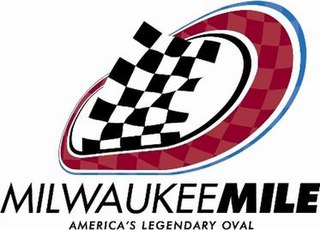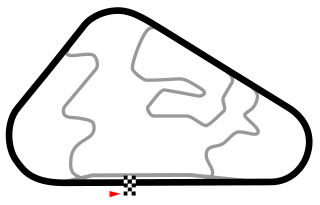Related Research Articles

Mario Gabriele Andretti is an Italian-born American former racing driver. One of the most successful Americans in the history of motorsports, Andretti is one of only two drivers to have won races in Formula One, IndyCar, the World Sportscar Championship, and NASCAR. He has also won races in midget car racing and sprint car racing.

Alfred Unser was an American automobile racing driver, the younger brother of fellow racing drivers Jerry and Bobby Unser, and father of Al Unser Jr. He was the second of four men to have won the Indianapolis 500-Mile Race four times, the fourth of five to have won the race in consecutive years, and won the National Championship in 1970, 1983, and 1985. The Unser family has won the Indy 500 a record nine times. He was the only person to have both a sibling (Bobby) and child as fellow Indy 500 winners. Al's nephews Johnny and Robby Unser have also competed in that race. Additionally, he became the first-and-only driver, to-date, to win the race on his birthday, in 1971.

Robert William Unser was an American automobile racer. At his induction into the Motorsports Hall of Fame of America in 1994, he had the fourth most IndyCar Series wins at 35. Unser won the 1968 and 1974 United States Automobile Club (USAC) national championships. He won the Pikes Peak International Hill Climb overall title 10 times.

The Grand Prix of Long Beach is an IndyCar Series race held on a street circuit in downtown Long Beach, California. Christopher Pook is the founder of the event. It was the premier race on the CART/Champ Car calendar from 1996 to 2008, and the 2008 race was the final Champ Car series race prior to the formal unification and end of the open-wheel "split" between CART and IRL. Since 2009, the race has been part of the unified IndyCar Series. The race is typically held in April. It is one of the longest continuously running events in Indy car racing and is considered one of the most prestigious events on the circuit.

The DFV is an internal combustion engine that was originally produced by Cosworth for Formula One motor racing. The name is an abbreviation of Double Four Valve, the engine being a V8 development of the earlier four-cylinder FVA, which had four valves per cylinder.
Vel's Parnelli Jones Racing, commonly referred to simply as Parnelli or VPJ, was a motor racing constructor and team from the United States. The team was formed in 1969 by former USAC racer Parnelli Jones and his business partner Velko "Vel" Miletich. Parnelli was initially solely concerned with USAC racing, where success came quickly; their driver Al Unser won the Indianapolis 500 race in 1970, driving a VPJ Colt, after leading 190 of the 200 racing laps. Unser went on to win the USAC championship. Unser repeated the Indy 500 win in 1971 with a new Colt built without the left side chassis offset that had been made illegal by 1971 rules, ending the season in fourth place in the USAC drivers points while teammate Joe Leonard won the championship.

Texas World Speedway (TWS) was a motorsport venue located in College Station, Texas.The track was one of only eight superspeedways of two miles (3.2 km) or greater in the United States used for racing, the others being Indianapolis, Daytona, Pocono, Talladega, Ontario (California), Auto Club, and Michigan. The track was located on approximately 600 acres (2.4 km²) on State Highway 6 in College Station, Texas. There was a 2-mile (3 km) oval, and several road course configurations. The full oval configuration was closely related to that of Michigan and was often considered the latter's sister track, featuring steeper banking, at 22 degrees in the turns, 12 degrees at the start/finish line, and only 2 degrees along the backstretch, compared to Michigan's respective 18, 12, and 5 degrees. The last major race occurred at the track in 1981. The track was used by amateur racing clubs such as the SCCA, NASA, Porsche Club of America, Corinthian Vintage Auto Racing, CMRA, driving schools and car clubs, as well as hosting music concerts and the like. The speedway was also a race track location for the video game, Need for Speed: Pro Street.

The Milwaukee Mile is a one-mile-long (1.6 km) oval race track in the central United States, located on the grounds of the Wisconsin State Fair Park in West Allis, Wisconsin, a suburb west of Milwaukee. Its grandstand and bleachers seats approximately 37,000 spectators. Paved 68 years ago in 1954, it was originally a dirt track. In addition to the oval, there is a 1.8 mile (2.8 km) road circuit located on the infield.

Rufus Parnell Jones is an American former professional racing driver and racing team owner. He is notable for his accomplishments while competing in the Indianapolis 500 and the Baja 1000 desert race. In 1962, he became the first driver to qualify over 150 mph. He won the race in 1963, then famously broke down while leading the 1967 race with three laps to go in a turbine car. During his career as an owner, he won the Indy 500 in 1970–1971 with driver Al Unser, Sr.
Viceroy is an American brand of cigarettes, currently owned and manufactured by R. J. Reynolds Tobacco Company in the United States and British American Tobacco outside of the United States.

The 58th 500 Mile International Sweepstakes was held at the Indianapolis Motor Speedway in Speedway, Indiana on Sunday, May 26, 1974. Johnny Rutherford, in his eleventh attempt, won the race from the 25th starting position, the farthest back since Louis Meyer in 1936. It was the first of his three Indy victories, and started a three-year stretch where he finished 1st-2nd-1st.

The 51st International 500 Mile Sweepstakes was held at the Indianapolis Motor Speedway in Speedway, Indiana, over two days, Tuesday May 30 and Wednesday May 31, 1967. The race was dominated by Parnelli Jones in the radically new, four-wheel drive STP-Paxton Turbocar gas turbine entered by prolific car owner Andy Granatelli. With three laps to go, however, Jones coasted to a stop when a $6 transmission bearing failed. A. J. Foyt assumed the lead, and weaved his way through a pileup on the final lap, to win his third Indy 500 victory.

Joe Leonard was an American professional motorcycle racer and racecar driver.

The ABC Supply 500 was an IndyCar Series race held at Pocono Raceway in Long Pond, Pennsylvania, located in the Pocono Mountains. The first Indy car race at Pocono was held in 1971. It was the first major event held at the track, shortly after its completion. The race was sanctioned by USAC from 1971 to 1981, and then by CART from 1982 to 1989, and was known as the Pocono 500. The race was removed from the CART calendar following the 1989 running, due to poor track conditions, as well as poor revenue for the promoter.

The Andretti Curse, sometimes referred to as Andretti Luck, is a folk belief in a string of bad luck the Andretti racing family has experienced in their efforts to win the Indianapolis 500 at Indianapolis Motor Speedway.

The Indianapolis Motor Speedway Museum is an automotive museum on the grounds of the Indianapolis Motor Speedway in Speedway, Indiana, United States, which houses the Indianapolis Motor Speedway Hall of Fame. It is intrinsically linked to the Indianapolis 500 and Brickyard 400, but it also includes exhibits reflecting other forms of motorsports, passenger cars, and general automotive history. In 2006, it celebrated its 50th anniversary. The museum foundation possesses several former Indianapolis 500-winning cars, and they are regularly rotated onto the display floor exhibits.
The Parnelli VPJ4 was a Formula One racing car designed by Maurice Philippe, and used by Vel's Parnelli Jones Racing during the 1974, 1975 and 1976 Formula One seasons.

The Ford-Cosworth Indy V8 engine is a series of mechanically similar, turbocharged, 2.65-liter, Indy car racing V-8, designed and developed by Cosworth in partnership with Ford. It was produced for over 30 years. It was used in U.S.A.C. Championship Car, C.A.R.T., and later Champ Car World Series; between 1976 and 2007. The DFX engine was the Indy car version of the highly successful 3-liter Cosworth DFV Formula One engine developed by former Lotus engineer Keith Duckworth and Colin Chapman, with financial backing from Ford for the Lotus 49 to campaign the 1967 season. This engine had 155 wins between 1967 and 1985 in F1. The DFX variant was initially developed for Indy car use by Parnelli Jones in 1976, with Cosworth soon taking over. This engine won the Indianapolis 500 ten consecutive years from 1978 to 1987, as well as winning all USAC and CART championships between 1977 and 1987. It powered 81 consecutive Indy car victories from 1981 to 1986, with 153 Indy car victories total.
The Parnelli VPJ6 is an open-wheel race car, designed by British designer John Barnard for Vel's Parnelli Jones Racing, to compete in U.S.A.C. Championship Car, between 1975 and 1980, as well as in CART, between 1979 and 1980. It was driven by Danny Ongais, Al Unser, George Snider, Bill Whittington, Lee Kunzman, and A. J. Foyt. It notably gave Foyt his last IndyCar championship, in 1979. It was powered by the powerful and successful DFV-derived DFX.
The Parnelli VPJ1 is an open-wheel race car, designed by British designer and engineer Maurice Phillippe for Vel's Parnelli Jones Racing, to compete in U.S.A.C. Championship Car, between 1972. It was driven by Mario Andretti and Al Unser. It was powered by an Offenhauser four-cylinder turbo engine, reputed to develop between 1,200–1,300 hp (890–970 kW), depending on turbo boost pressure levels. It didn't win any races, but did score three podium finishes; two for Unser at Indianapolis and Pocono, and one for Andretti at Phoenix.
References
- ↑ "Jan Opperman's VPJ-2 IndyCar Has a Colorful History Just Like Its Larger-Than-Life Driver". Thedrive.com. Retrieved 2022-06-02.
- ↑ "1973 Parnelli VPJ-2". conceptcarz.com. Retrieved 2022-06-02.
- ↑ Log in (2021-11-01). "This reborn 1972 Indy car was salvaged from Parnelli Jones' dumpster - Hagerty Media". Hagerty.com. Retrieved 2022-06-02.
- ↑ "1973 Parnelli VPJ-2 technical and mechanical specifications". Conceptcarz.com. Retrieved 2022-06-02.